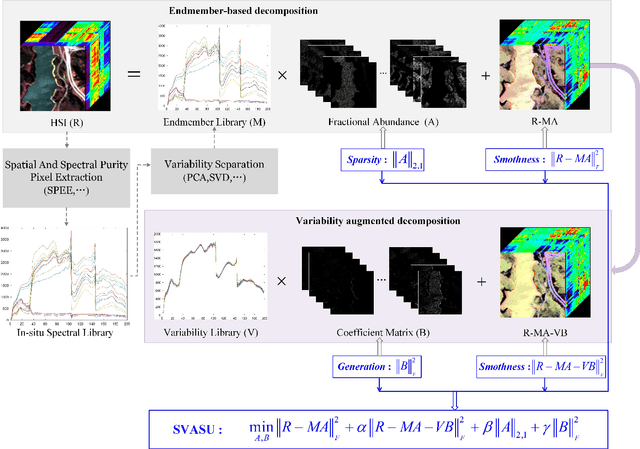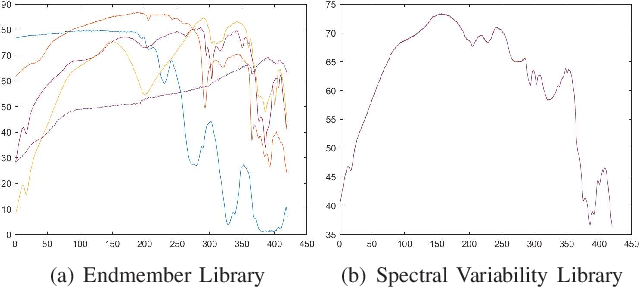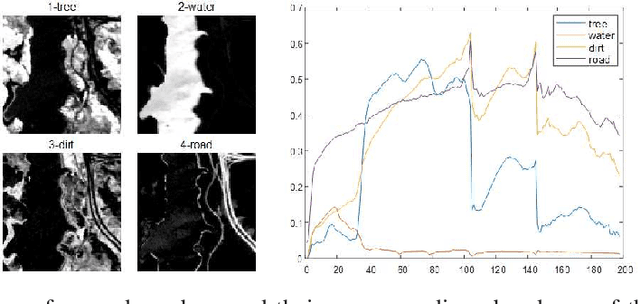Mingyang Ma
A Comprehensive Study on the Robustness of Image Classification and Object Detection in Remote Sensing: Surveying and Benchmarking
Jun 21, 2023Abstract:Deep neural networks (DNNs) have found widespread applications in interpreting remote sensing (RS) imagery. However, it has been demonstrated in previous works that DNNs are vulnerable to different types of noises, particularly adversarial noises. Surprisingly, there has been a lack of comprehensive studies on the robustness of RS tasks, prompting us to undertake a thorough survey and benchmark on the robustness of image classification and object detection in RS. To our best knowledge, this study represents the first comprehensive examination of both natural robustness and adversarial robustness in RS tasks. Specifically, we have curated and made publicly available datasets that contain natural and adversarial noises. These datasets serve as valuable resources for evaluating the robustness of DNNs-based models. To provide a comprehensive assessment of model robustness, we conducted meticulous experiments with numerous different classifiers and detectors, encompassing a wide range of mainstream methods. Through rigorous evaluation, we have uncovered insightful and intriguing findings, which shed light on the relationship between adversarial noise crafting and model training, yielding a deeper understanding of the susceptibility and limitations of various models, and providing guidance for the development of more resilient and robust models
CBA: Contextual Background Attack against Optical Aerial Detection in the Physical World
Mar 20, 2023



Abstract:Patch-based physical attacks have increasingly aroused concerns. However, most existing methods focus on obscuring targets captured on the ground, and some of these methods are simply extended to deceive aerial detectors. They smear the targeted objects in the physical world with the elaborated adversarial patches, which can only slightly sway the aerial detectors' prediction and with weak attack transferability. To address the above issues, we propose to perform Contextual Background Attack (CBA), a novel physical attack framework against aerial detection, which can achieve strong attack efficacy and transferability in the physical world even without smudging the interested objects at all. Specifically, the targets of interest, i.e. the aircraft in aerial images, are adopted to mask adversarial patches. The pixels outside the mask area are optimized to make the generated adversarial patches closely cover the critical contextual background area for detection, which contributes to gifting adversarial patches with more robust and transferable attack potency in the real world. To further strengthen the attack performance, the adversarial patches are forced to be outside targets during training, by which the detected objects of interest, both on and outside patches, benefit the accumulation of attack efficacy. Consequently, the sophisticatedly designed patches are gifted with solid fooling efficacy against objects both on and outside the adversarial patches simultaneously. Extensive proportionally scaled experiments are performed in physical scenarios, demonstrating the superiority and potential of the proposed framework for physical attacks. We expect that the proposed physical attack method will serve as a benchmark for assessing the adversarial robustness of diverse aerial detectors and defense methods.
Contextual adversarial attack against aerial detection in the physical world
Feb 27, 2023



Abstract:Deep Neural Networks (DNNs) have been extensively utilized in aerial detection. However, DNNs' sensitivity and vulnerability to maliciously elaborated adversarial examples have progressively garnered attention. Recently, physical attacks have gradually become a hot issue due to they are more practical in the real world, which poses great threats to some security-critical applications. In this paper, we take the first attempt to perform physical attacks in contextual form against aerial detection in the physical world. We propose an innovative contextual attack method against aerial detection in real scenarios, which achieves powerful attack performance and transfers well between various aerial object detectors without smearing or blocking the interested objects to hide. Based on the findings that the targets' contextual information plays an important role in aerial detection by observing the detectors' attention maps, we propose to make full use of the contextual area of the interested targets to elaborate contextual perturbations for the uncovered attacks in real scenarios. Extensive proportionally scaled experiments are conducted to evaluate the effectiveness of the proposed contextual attack method, which demonstrates the proposed method's superiority in both attack efficacy and physical practicality.
Benchmarking Adversarial Patch Against Aerial Detection
Oct 30, 2022Abstract:DNNs are vulnerable to adversarial examples, which poses great security concerns for security-critical systems. In this paper, a novel adaptive-patch-based physical attack (AP-PA) framework is proposed, which aims to generate adversarial patches that are adaptive in both physical dynamics and varying scales, and by which the particular targets can be hidden from being detected. Furthermore, the adversarial patch is also gifted with attack effectiveness against all targets of the same class with a patch outside the target (No need to smear targeted objects) and robust enough in the physical world. In addition, a new loss is devised to consider more available information of detected objects to optimize the adversarial patch, which can significantly improve the patch's attack efficacy (Average precision drop up to 87.86% and 85.48% in white-box and black-box settings, respectively) and optimizing efficiency. We also establish one of the first comprehensive, coherent, and rigorous benchmarks to evaluate the attack efficacy of adversarial patches on aerial detection tasks. Finally, several proportionally scaled experiments are performed physically to demonstrate that the elaborated adversarial patches can successfully deceive aerial detection algorithms in dynamic physical circumstances. The code is available at https://github.com/JiaweiLian/AP-PA.
How to Build Robust FAQ Chatbot with Controllable Question Generator?
Nov 18, 2021



Abstract:Many unanswerable adversarial questions fool the question-answer (QA) system with some plausible answers. Building a robust, frequently asked questions (FAQ) chatbot needs a large amount of diverse adversarial examples. Recent question generation methods are ineffective at generating many high-quality and diverse adversarial question-answer pairs from unstructured text. We propose the diversity controllable semantically valid adversarial attacker (DCSA), a high-quality, diverse, controllable method to generate standard and adversarial samples with a semantic graph. The fluent and semantically generated QA pairs fool our passage retrieval model successfully. After that, we conduct a study on the robustness and generalization of the QA model with generated QA pairs among different domains. We find that the generated data set improves the generalizability of the QA model to the new target domain and the robustness of the QA model to detect unanswerable adversarial questions.
Spectral Variability Augmented Sparse Unmixing of Hyperspectral Images
Oct 21, 2021



Abstract:Spectral unmixing (SU) expresses the mixed pixels existed in hyperspectral images as the product of endmember and abundance, which has been widely used in hyperspectral imagery analysis. However, the influence of light, acquisition conditions and the inherent properties of materials, results in that the identified endmembers can vary spectrally within a given image (construed as spectral variability). To address this issue, recent methods usually use a priori obtained spectral library to represent multiple characteristic spectra of the same object, but few of them extracted the spectral variability explicitly. In this paper, a spectral variability augmented sparse unmixing model (SVASU) is proposed, in which the spectral variability is extracted for the first time. The variable spectra are divided into two parts of intrinsic spectrum and spectral variability for spectral reconstruction, and modeled synchronously in the SU model adding the regular terms restricting the sparsity of abundance and the generalization of the variability coefficient. It is noted that the spectral variability library and the intrinsic spectral library are all constructed from the In-situ observed image. Experimental results over both synthetic and real-world data sets demonstrate that the augmented decomposition by spectral variability significantly improves the unmixing performance than the decomposition only by spectral library, as well as compared to state-of-the-art algorithms.
Compressive Shack-Hartmann Wavefront Sensing based on Deep Neural Networks
Nov 20, 2020



Abstract:The Shack-Hartmann wavefront sensor is widely used to measure aberrations induced by atmospheric turbulence in adaptive optics systems. However if there exists strong atmospheric turbulence or the brightness of guide stars is low, the accuracy of wavefront measurements will be affected. In this paper, we propose a compressive Shack-Hartmann wavefront sensing method. Instead of reconstructing wavefronts with slope measurements of all sub-apertures, our method reconstructs wavefronts with slope measurements of sub-apertures which have spot images with high signal to noise ratio. Besides, we further propose to use a deep neural network to accelerate wavefront reconstruction speed. During the training stage of the deep neural network, we propose to add a drop-out layer to simulate the compressive sensing process, which could increase development speed of our method. After training, the compressive Shack-Hartmann wavefront sensing method can reconstruct wavefronts in high spatial resolution with slope measurements from only a small amount of sub-apertures. We integrate the straightforward compressive Shack-Hartmann wavefront sensing method with image deconvolution algorithm to develop a high-order image restoration method. We use images restored by the high-order image restoration method to test the performance of our the compressive Shack-Hartmann wavefront sensing method. The results show that our method can improve the accuracy of wavefront measurements and is suitable for real-time applications.
 Add to Chrome
Add to Chrome Add to Firefox
Add to Firefox Add to Edge
Add to Edge